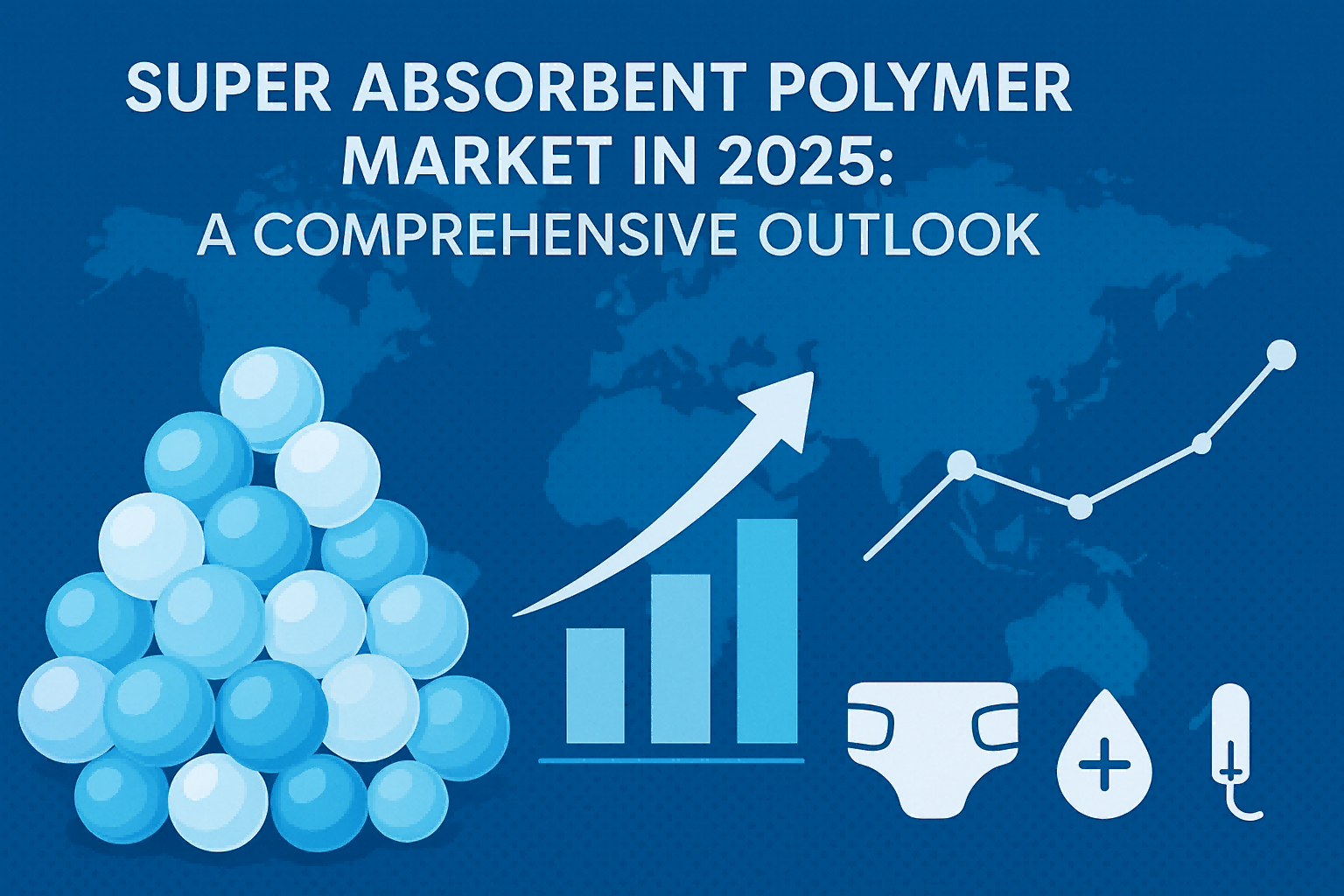As the world continues to confront challenges in hygiene, agriculture, and medical care, Super Absorbent Polymers (SAPs) have emerged as indispensable materials. From baby diapers to drought-resistant soils and advanced wound dressings, SAPs are driving innovation—and growth—across multiple industries. In this blog, we’ll dive into the state of the SAP market in 2025, exploring its size, regional dynamics, key application segments, growth drivers, challenges, and what’s on the horizon.

1. Market Size & Growth Forecast
According to leading industry analysts, the global Super Absorbent Polymer market in 2025 is valued at around USD 10 billion, with forecasts pointing to a 6–8% compound annual growth rate (CAGR) over the next decade. Depending on methodology, estimates for 2025 revenues range from USD 9.9 billion to USD 11.3 billion, but all agree on steady, mid-single-digit growth fueled by surging demand in hygiene, agriculture, and specialty industrial applications.
2. Regional Dynamics
-
Asia-Pacific (APAC)
-
Market Size: ~USD 4 billion in 2025
-
Key Drivers: Explosive growth in baby-diaper and feminine-care consumption in China and India; expanding agricultural uses in Australia and Southeast Asia
-
Outlook: Poised to maintain the largest share globally, with ~6.8% CAGR through 2034
-
-
North America & Europe
-
Combined Share: Approximately 40–50% of global consumption
-
Applikationer: Hygiene (diapers, adult incontinence), medical wound-care dressings, niche industrial uses
-
Trends: Aging populations in the U.S., Canada, and Western Europe are lifting demand for adult-incontinence products; regulatory pushes toward biodegradable materials
-
-
Middle East & Africa (MEA)
-
Smaller Base, Faster Growth: Expected ~4.8% CAGR 2025–2032
-
Drivers: Water-management (soil conditioners), rising awareness of hygiene and sanitation
-
3. Key Application Segments
-
Hygiene Grade (≈70% of Demand)
-
Baby diapers, feminine hygiene, adult incontinence
-
Natriumpolyakrylat as the workhorse, delivering 300–800× liquid uptake by weight
-
-
Agricultural Grade (Fastest Growing)
-
Soil moisture retention, seed coatings, drought mitigation
-
Kaliumpolyakrylat and bio-based SAP variants gaining traction among resource-stressed farmers
-
-
Medical & Industrial
-
Wound dressings, wound-care composites, cable encapsulation, leak-sealing materials
-
Innovations in bio-compatibility and biodegradability
-
4. Market Drivers
-
Rising Hygiene Awareness
Growing middle-class incomes in APAC and Latin America drive diaper and feminine-care product volumes. -
Aging Demographics
Increased demand for adult-incontinence products in North America, Europe, and Japan. -
Water Stress & Agriculture
SAPs help retain moisture in soils, reducing irrigation needs and improving crop resilience in arid regions. -
Sustainability & Innovation
Bio-based, biodegradable SAPs and advanced super-absorbent composites are moving from R&D into early commercialization.
5. Challenges & Restraints
-
Feedstock Volatility
Acrylate monomers are petroleum-derived; oil price swings can squeeze manufacturer margins. -
Regulatory Hurdles
Stricter disposal, recyclability, and biodegradability mandates—especially in the EU—are reshaping product development timelines. -
Environmental Concerns
End-of-life disposal and microplastic formation from conventional SAPs remain under close scrutiny.
6. 2025 Near-Term Outlook
-
Biodegradable Breakthroughs
Polysaccharide-based SAPs and other green chemistries are expected to enter pilot or early commercial stages by late 2025. -
Capacity Expansions
Major producers in China, Saudi Arabia, and the U.S. are adding new production lines to meet hygiene-grade demand. -
Consolidation & M&A
Especially in Europe, smaller regional players are merging or being acquired to gain scale, broaden R&D capabilities, and streamline supply chains.
7. Conclusion
In mid-2025, the Super Absorbent Polymer market stands at a pivotal point: entrenched in hygiene applications but rapidly branching into agriculture and specialty industrial uses. With a healthy growth outlook of 6–8% CAGR, the industry is balancing rising demand against environmental and regulatory pressures. The next wave of innovation—driven by bio-based and biodegradable SAPs—will be critical in sustaining long-term growth and meeting global sustainability goals.
Stay tuned for more updates as we track the progress of these cutting-edge materials in transforming everyday products and critical applications worldwide.

